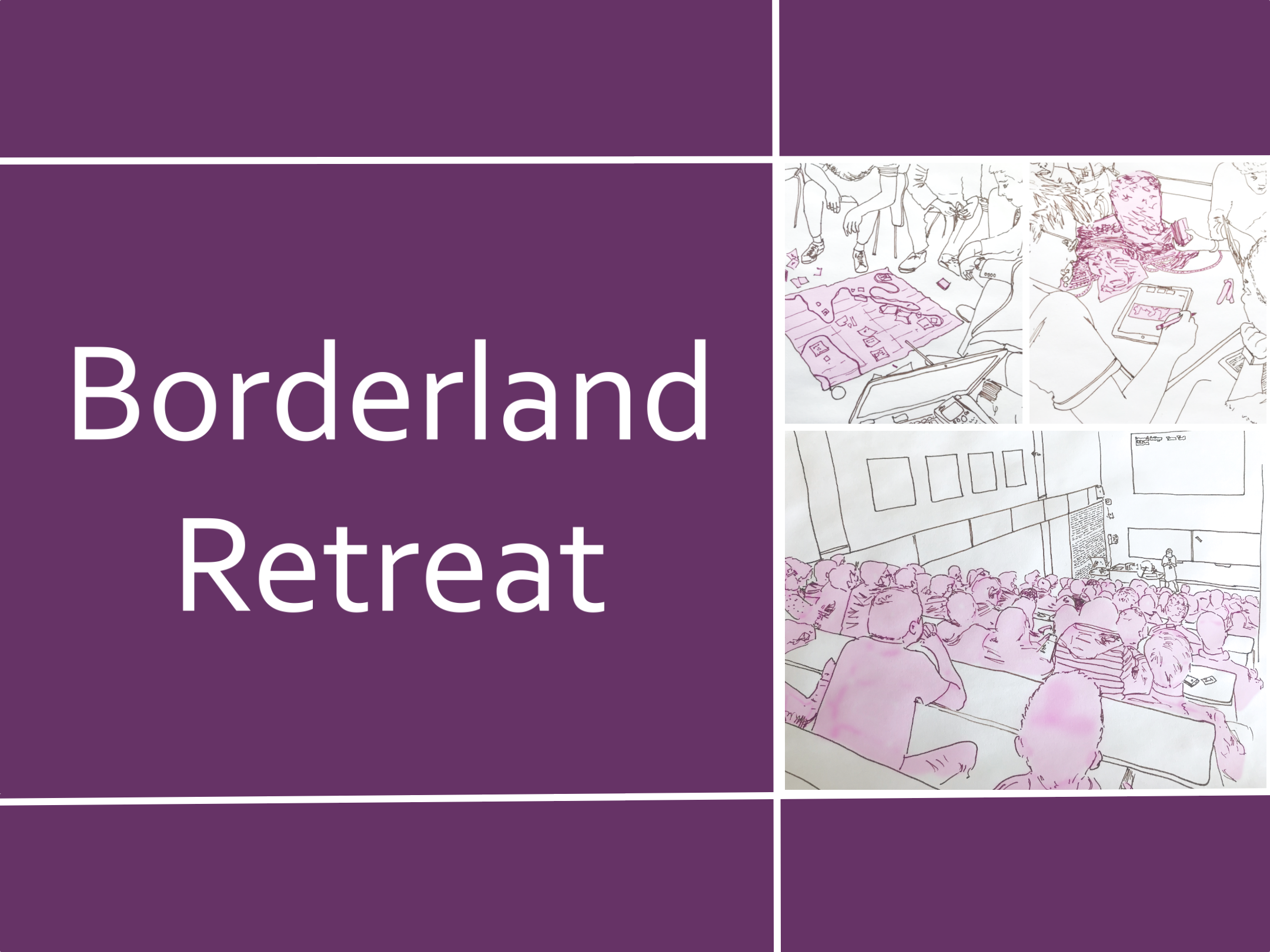Authentic teachers, authentic teaching. A retreat from and towards teaching in higher education. Bringing our connected and whole selves to our teaching and research to enhance our practice.
Why Borderland?
“borders are set up to define places that are safe and unsafe, to distinguish us from them. A border is a dividing line, a narrow strip along a steep edge. A borderland is a vague and undetermined place created by the emotional residue of an unnatural boundary […] The prohibited and forbidden are its inhabitants.”
Anzaldúa, G. (2012) Borderlands La Frontera. The New Mestiza (4th Ed.). San Francisco, Aunt Lute Books.
In both teaching and research we are often encouraged to be ‘professional’ and perhaps even ‘objective’ in our approach. To leave our whole selves at the door and perform a role. This signifies a commitment to quality – drawing distinctions between our roles as experts and those of students as novices. But does it also signify a lack of connection, authenticity and empathy? And is this a loss to the classroom encounter?
Event Design
The retreat was designed to run over four days, from 11am to 3pm BST each day.
The retreat was run on Zoom, using a virtual retreat platform for collaboration and asynchronous participation. We aimed for an inclusive experience, making the live sessions drop in/out to fit around existing work and life commitments, and all activity instructions and talks were recorded and accessible in the virtual retreat platform for anyone participating out of hours. This also allowed us to share our creations, discussions and all the resources that came out of our time together.
The first three days had the same structure with:
- 11-12pm – research inspirations
- 12-1pm – active lunch (screen break, or stay online to chat, make, write or otherwise do)
- 1-2pm – teaching inspirations
- 2-3pm – life lesson inspirations
The research and teaching inspiration and life lesson hours were all structured with a 10-15 minute mini-presentation, an active reflection exercise and then some group discussion. On the first day, we used poetry activities for active reflection, on the second day we used visual arts methods and on the third day we used narrative and storytelling methods.
On our final day, we revisited our favourite reflection methods, and created maps of our teaching futures – along with plenty of discussion and networking.
Active Reflection
The active reflection activities encouraged creativity and risk taking – with participants able to use the activities or to reflect using another method of their choice. Although sharing our reflections was optional, it was lovely to find that nearly everyone had something to share throughout the retreat, and there was plenty for us to discuss.
For the poetry, we explored list poems and found poetry – with both methods being super accessible and quick to try out.
For the visual arts methods, we made zines and also attempted a sequence of sketches using our non-dominant hands to create an observed sketch, and then repeating that sketch from memory with our dominant hands, and then revisiting that same sketch with a difference – using our imagination to change an element of the image. We only had five minutes for each sketch – so there was no time to get bogged down or to aim for any type of perfection.







For the narrative methods, we used a storyworld mapping technique (identifying characters, environs, quest, obstacles and magic wands) and then a simple story frame to move from a status quo, to a disruption or challenge and then back to an improved status quo.
Inspiration Mini-Presentations
We had the following inspiration mini-presentations – all of which are recorded and remain available to the retreat participants.
- Research(ing) Practice (Elizabeth Hauke) – considering working as a practitioner researcher – the relationship between teaching and research in this context
- Pushing the Boundaries of Reflection – The Answer’s on a Postcard (Mark Pope) – introducing a student reflection tool using postcard correspondence
- Developing Intuitive Action (Elizabeth Hauke) – reflecting on the importance of intuitive and embodied action and supporting this development in students – by considering a developing art practice
- Using Research in Teaching (Mark Pope) – considering using expertise and research methodology from his PhD in teaching with both undergraduate and postgraduate students (specifically critical discourse analysis)
- Evaluating Student Knowledge Exchange (Mary Richards) – introducing an international knowledge exchange project, some of the benefits and aims and also the challenges
- Managing Discomfort and Discouragement (Elizabeth Hauke) – reflecting on how we can develop strategies to help students manage discomfort and discouragement in their learning – by considering learning how to run
- Crossing Borders and Shifting the Boundary Stones (Mary Richards) – contextualising the amazing educational initiative that Mary presented yesterday within the wider project and highlighting the research aspects of the work
- De-Normativising the Classroom (Elizabeth Hauke) – a critical appraisal of the concept of inclusivity and developing learning in the classroom that moves beyond this, including neuroqueering approaches – with classroom examples
- Waking up to Difference (Elizabeth Hauke) – reflecting on how a personal experience of difference can deepen and politicise approaches to supporting students in the classroom – including first hand experience of an autism diagnosis and the impacts of that
Participants
We had 18 active participants over the four days (with more accessing the retreat and participating in the week following the retreat). Of those, fourteen participated in the live Zoom sessions. We had participants from the UK, Europe, the US and South America.
We also participants from further and higher education, from different types of institution and from a range of disciplines.
Feedback
I wasn’t prepared for how interesting and thought-provoking the retreat turned out to be.
Read more from Katalin Hanniker, University of Surrey in her reflective post
